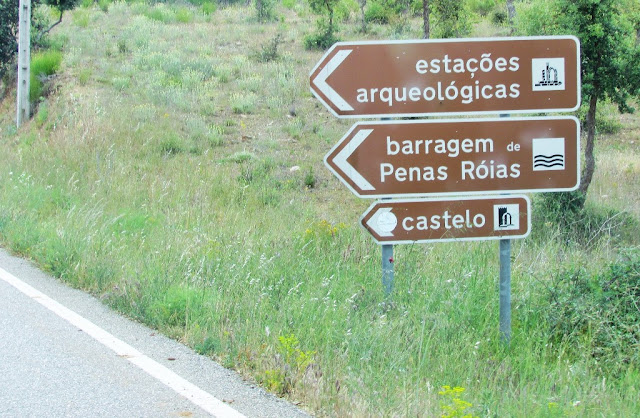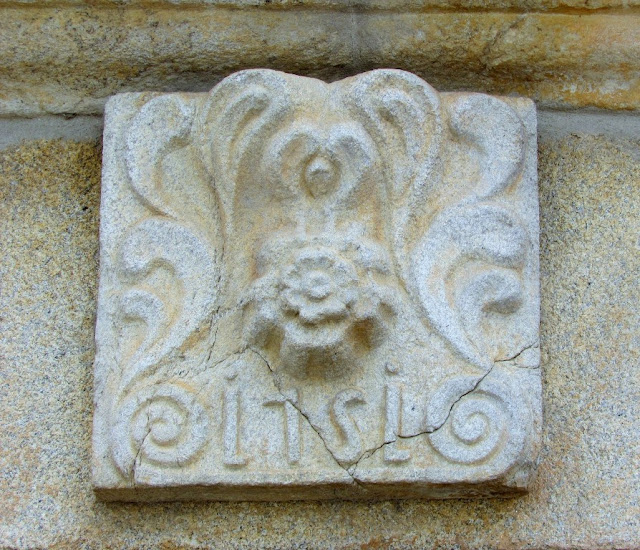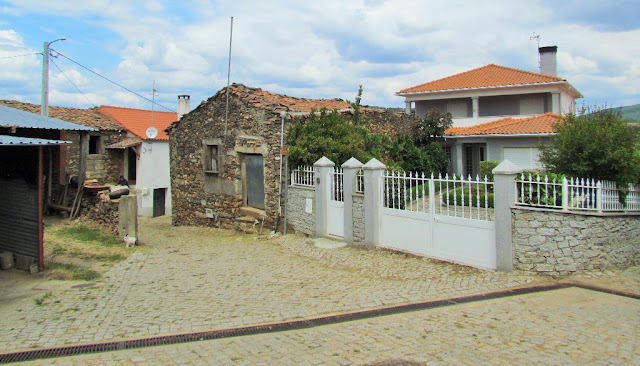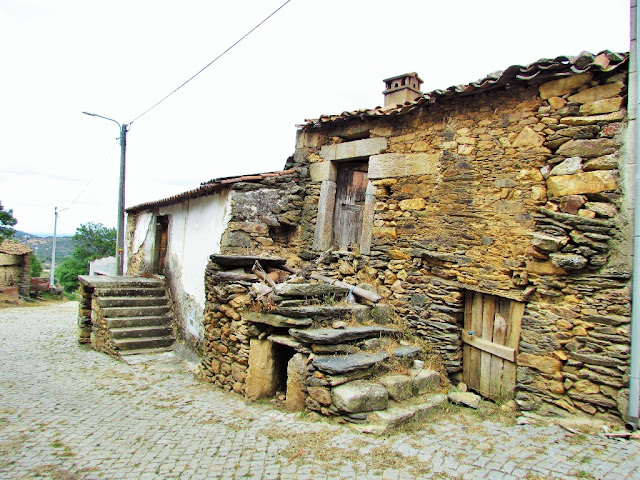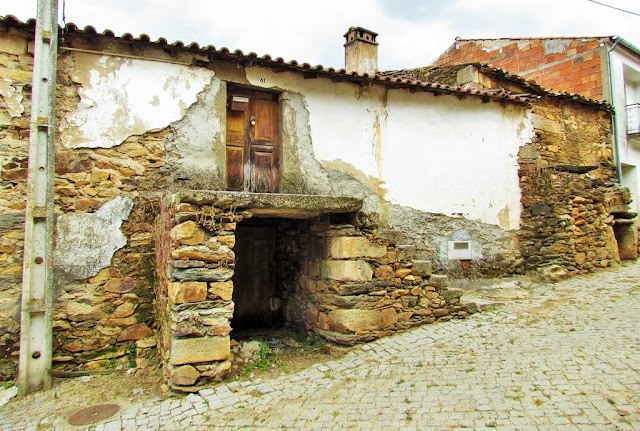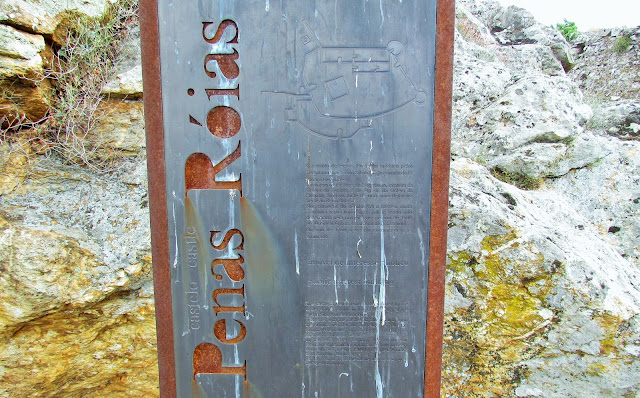PENAS ROIAS
41.39102º N; 6.65440º W
Penas Roias is a Portuguese parish in the municipality of Mogadouro, with an area of 33.04 km² and 278 inhabitants (2021). Its population density is 8.4 inhabitants/km².
villages
The parish is made up of three villages:
Penas Roias - 87 inhabitants in 2011
Varix - 226 inhabitants
Vilariça - 69 inhabitants in 2011
Geography
Serra do Variz or Serra de Santiago is divided between the parishes of Penas Roias and Vila de Ala. This has an altitude of 970 meters, being the second highest in the municipality.
The Ribeira de Bastelos passes through the parish, where the Bastelos Dam is located, which supplies water to dozens of villages and even to the county seat. In the dam area there is also a Picnic Park and an unsupervised River Beach.
It borders to the north with São Martinho do Peso, to the east with Castanheira and Sanhoane, to the south with Tó and Vila de Ala, and to the west with Azinhoso and Mogadouro.
History
There are cave paintings in this parish that date back to the Mesolithic Period, and these paintings are present in Fraga da Letra.
After the assertion of the Kingdom of Portugal, in the 12th century, the Castle of Mogadouro and the Castle of Penas Roias were rebuilt by the Knights Templar, after both castles were donated by Fernão Mendes de Bragança to this Order in 1145.
It had a charter given by D. Afonso III, in 1272, and a new charter granted by D. Manuel I in 1512.
In 1311, with the extinction of the Knights Templar, the Castle of Penas Róias passes to the Order of Christ.
In 1571 the Monóptero de São Gonçalo was built, in Quinta da Nogueira, property of the Távoras.
CASTLE OF PENAS ROIAS
(Not accessible to the public.)
The Castle of Penas Roias is located in the village and parish of Penas Roias, municipality of Mogadouro, district of Bragança, in Portugal.
Former castle of the Order of the Templars in the region of Trás os Montes and Alto Douro, it integrated, at the time of the constitution of Portuguese nationality, together with those of Algoso, Mogadouro, Miranda do Douro, Vimioso and Bragança, the so-called hard core of the Northeast of Trás-os-Montes.
Comprised of the Mountains Touristic-Promotional Area, it overlooks the Mother Church of Santa Maria de Azinhoso and, in the distance, Mogadouro.
History
Background
Little is known about the primitive human occupation of this region. Archaeological testimonies point to a protohistoric occupation of the site, which may be related to a castro. At the time of the Roman invasion of the Iberian Peninsula, it was abandoned.
the medieval castle
At the time of the Christian reconquest of the peninsula, the region was initially conquered by the kingdom of León.
With the affirmation of the kingdom of Portugal, before the establishment of the Capital in Coimbra, its active defense became imperative. To this end, D. Afonso Henriques (1112-1185) delegated to the Knights of the Knights Templar the task of strengthening the accesses to the South and East of the Mondego River, donating to them, from 1145 onwards, several domains such as those of Mogadouro and others, in Trás-os-Montes.
The domains of Penas Roias were donated, in 1145, to the Order. This period coincides with archaeological testimonies of its occupation in the 12th century, or a little earlier, at the end of the 11th century, which suggests the previous existence of a defensive redoubt in the place, a fact that could be attested by the remains of circular turrets. that subsist in the vertices of the castle.
Although traditionally the date of 1166 is stated as the beginning of the construction of the Castle of Penas Roias, the epigraphic inscription in the Keep is quite deteriorated. It is possible, however, to read the date as Era 1210 (from the Spanish Era, corresponding to the year 1172 of the Christian Era) or Era 1219 (corresponding to 1181). Some authors intend to read in it the name of Gualdim Pais, which is not fully verifiable. In any case, the works relied on his direct sponsorship, since the tower (and the castle) are part of the larger construction movement of Templar castles in the country, all marked by epigraphic inscriptions and undertaken by Gualdim Pais, such as the Almourol, Longroiva, Tomar and others.
Under the reign of D. Sancho I (1185-1211), a new effort was made to repopulate the village, which became the seat of the Council. At this stage, the Order shifted its activities further south, to Beira Baixa, having received the domains of Idanha-a-Velha and Monsanto, in 1165 (those of the first confirmed in 1197), and a portion next to Vila Velha de Ródão, in 1199. The castle dominated, at the time, the small village of Penas Roias, slightly away.
Later, under the reign of D. Afonso III (1248-1279), the village is referred to in the Inquiries of 1258, having received a charter, together with Mogadouro, in 1272, a charter that was renewed to Penas Roias the following year ( 1273). Faced with the extinction of the Order of the Temple, D. Dinis (1279-1325) transferred the domains of Penas Roias to the Order of Christ (1319), it is believed that work was carried out to recover and reinforce the defenses at the time.
At this stage, when the village was walled, D. Manuel I (1495-1521) granted it the Foral Novo (1512).
Of the old Templar castle, only a tower (closed to the public) and the remains of ancient walls and medieval turrets are currently visible.








